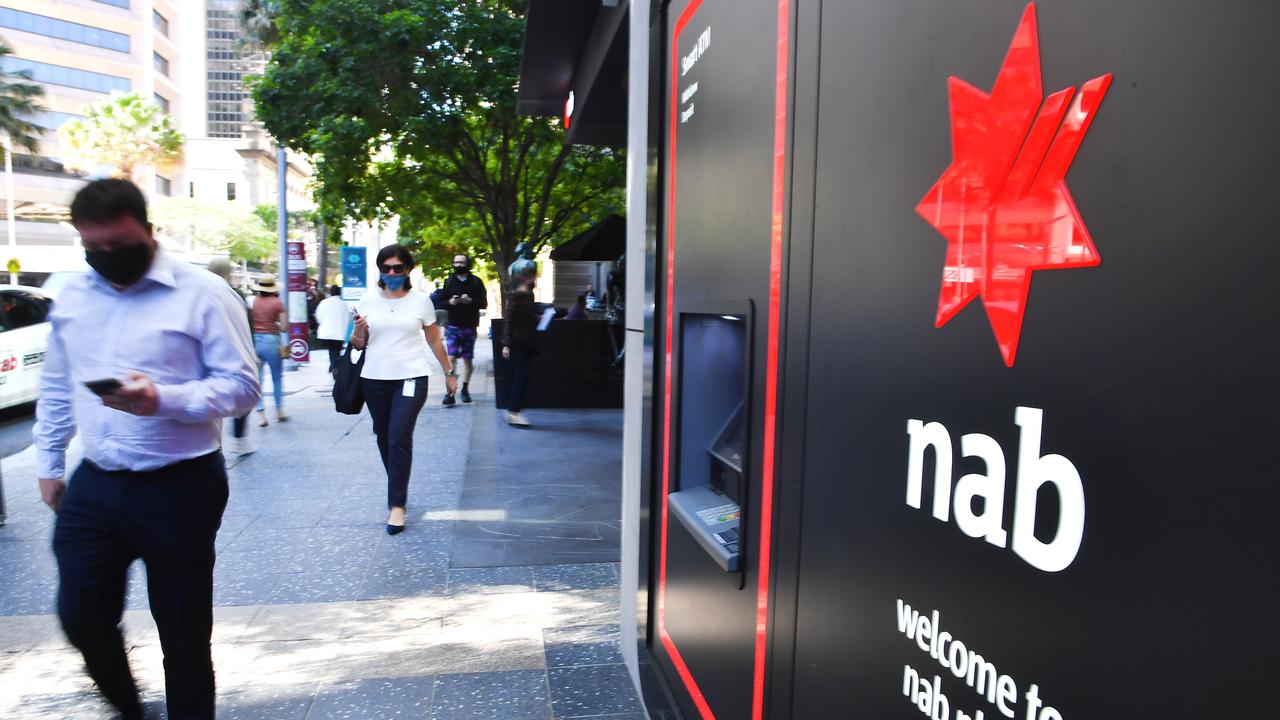NAB profits surge to $4.1 billion due to interest rates skyrocketing to 3.85 per cent
The major bank has posted a staggering profit on the back of surging interest rates – and has predicted what’s next for the economy.

Skyrocketing interest rates have helped National Australia Bank post a whopping $4.1 billion in profits – a jump of 17 per cent compared to the same time last year.
NAB was the first major back to reveal its half-year profit results, which rose from $3.48 billion in 2022.
Chief executive Ross McEwan said the bank profits have been boosted by higher interest rates and a boom in business lending.
“The higher interest rate environment has also been an important near-term driver of revenue this period,” he said.
Interest rates have risen from 0.1 per cent to 3.85 per cent since May last year.

Mr McEwan also believes there are encouraging signs inflation and interest rates in Australia are peaking, and the nation would avoid a “pronounced economic correction”.
But he warned the full impact of the cost of living crisis was still emerging and he expected economic growth to slow and unemployment to rise.
“In Australia, consumption and overall growth has started to soften reflecting the impact of monetary policy tightening,” he said.
“There are also encouraging signs that inflation is beginning to moderate which, in combination with a deterioration in the outlook for global growth, means the official cash rate is likely at or around its peak.”
Overall, the bank’s revenues rose by 19.3 per cent for the first half of the financial year, with NAB’s acquisition of Citi’s consumer lending business adding 2.7 per cent to the top line figure.

The combined profits of three of the major banks were expected to hit $11.7 billion.
NAB fell short of the $4.2 billion prediction, while ANZ is tipped to report an annual cash profit of $3.8 billion and Westpac $3.8 billion – an increase of more than 10 per cent.
While bad debts from mortgages dropped, Mr McEwan said there was an increase in business lending arrears in the period, while bank failures overseas were “on the rise”.
“This more challenging environment is not unexpected, and we feel well-placed to manage through this period and continue to grow,” he said.
However, he warned the bank was keeping a close eye on the impact of higher interest rates “against the backdrop of a slowing economy and increasing competition”.
“The impact of higher living and interest costs on household spending and the broader economy is becoming more evident and we have a range of options available for customers needing support,” he said.

NAB’S record profit underlines why overworked and underpaid staff at the bank must receive fair pay increases in the current round of enterprise agreement negotiations, the Finance Sector Union (FSU) urged.
It said the bank’s “massive” profit has been achieved as a result of the hard work of more than 30,000 staff “who have watched in amazement as the bank’s senior executives continue to reject claims from the FSU for a decent pay rise and an end to ‘sweatshop’ working conditions”.
FSU national secretary Julia Angrisano said its members, like the rest of the community, are experiencing the pain of inflation in every financial decision they make and now NAB has the opportunity and responsibility to do the right thing.
“NAB is well aware that to go even close to becoming a good employer it must lift wage rates and reform its exploitative working conditions,” she said.
“If CEO Ross McEwan and the highly paid NAB senior executive team were serious about becoming a ‘top quartile’ employer, they would scrap the discretionary pay system and ensure their colleagues were able to leave work on time.
“The FSU is calling on the NAB to resolve these ongoing negotiations for a new Enterprise Agreement on terms that will ensure members can meet the cost of living crisis for them and their families.”

Meanwhile, the Australian Conservation Foundation has welcomed NAB’s increased transparency on its exposure to nature-related risk and urged the bank to set ‘no deforestation’ targets and attach relevant conditions to its loans to agribusinesses.
“Behind every agribusiness that clears wildlife habitat for cattle grazing is a bank loan or a mortgage,” said ACF’s corporate campaigner Jonathan Moylan.
More Coverage
“We know that around half of Australia’s GDP has a moderately to very high direct dependency on nature, so banks need to be open about their exposure to the risk of financing nature destruction and set targets to minimise it.
“NAB’s announcement that it will assess water-related risks in its agribusiness portfolio is welcome, but as Australia’s dominant agribusiness lender, it should also assess, disclose and set targets to address biodiversity loss and end extinction and deforestation.
“NAB is yet to set targets for nature or disclose its impacts, risks and dependencies on nature on a portfolio-wide basis. Banks should not lend to agribusinesses without any conditions relating to deforestation.”






